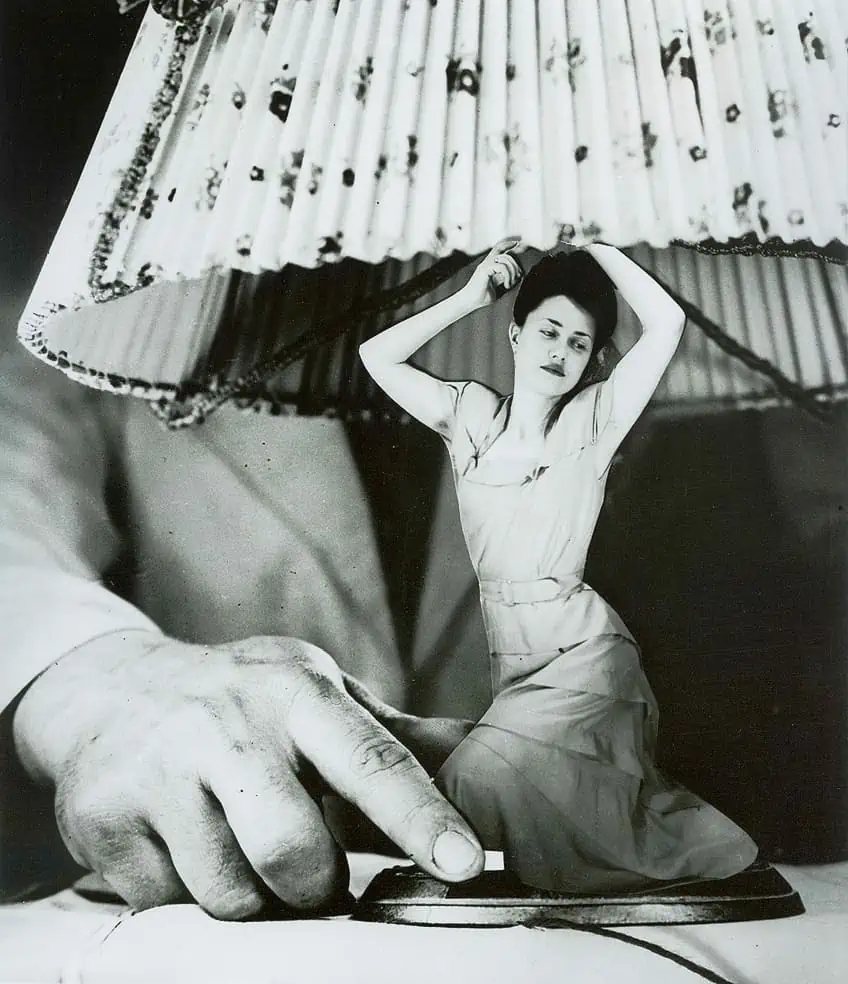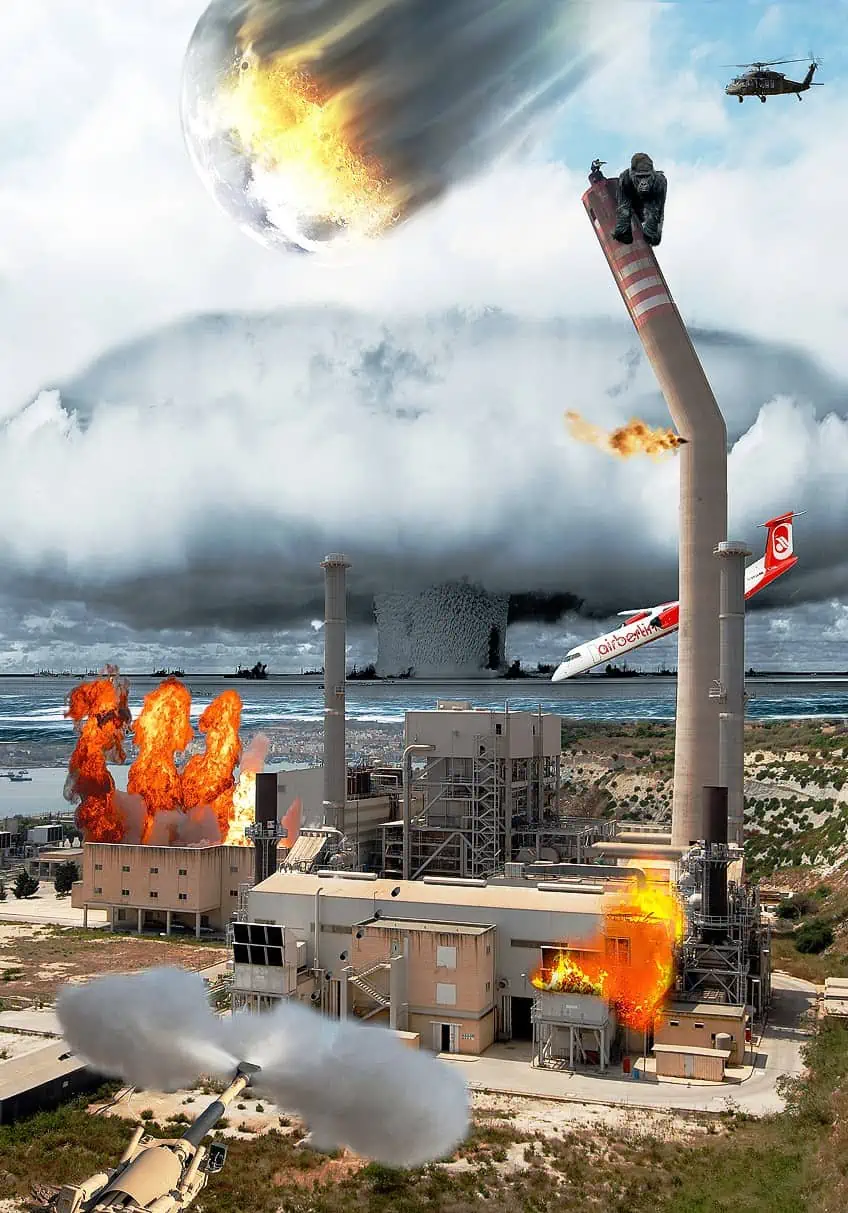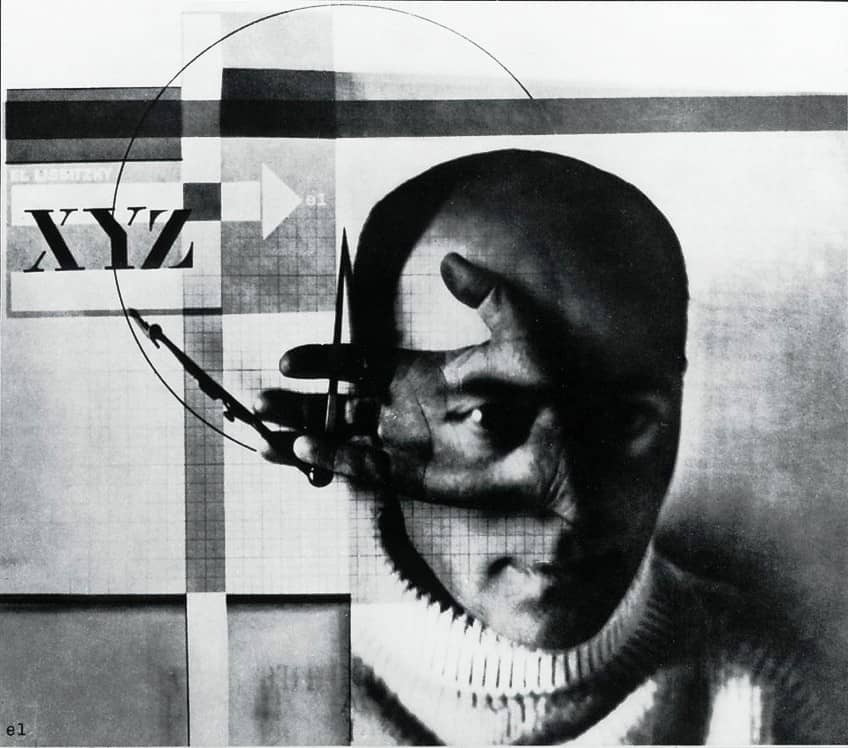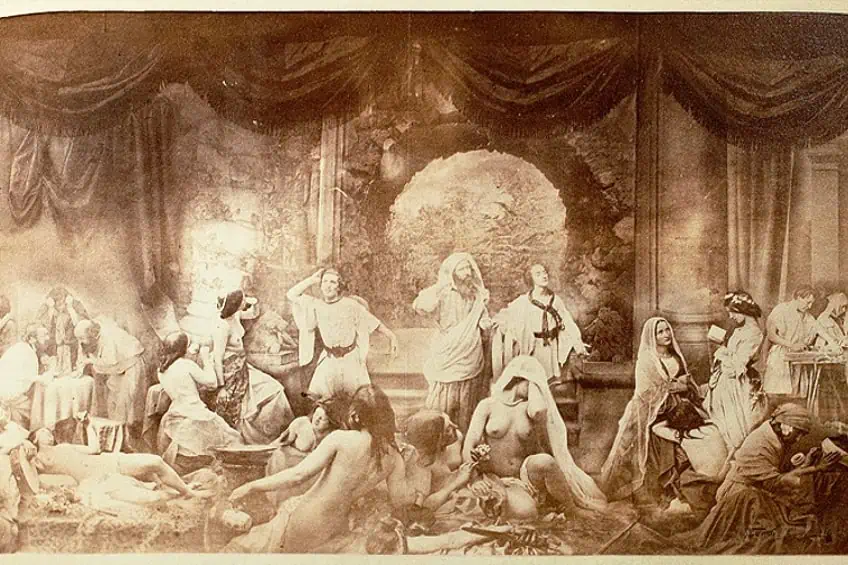Photomontage Art – The Art of Illusion
What is photomontage art and when did this art form begin? The surreal world of photomontage art is described as the 20th-century practice of creating visual compositions using a collection of images. The wizardry of creating digital compositions today was informed by the history of photomontage art that originated around 1915, which we will explore more in this article. Below, we will take a look at the history of photomontage art as a powerful medium that extends beyond its political dissent. From the visual productions of the Dadaists to the visual symphonies of contemporary photomontage artists, we will examine all the odds and ends of photomontage art that will inspire you to explore alternative ways of playing with photography and collage. Keep reading to learn more about this fascinating art form!
Contents
- 1 Defining Photomontage in Art
- 2 Tracing the History of Photomontage Art
- 3 The Development of Photomontage Techniques
- 4 Famous Photomontage Artworks to Know
- 4.1 Two Ways of Life (1857) by Oscar Rejlander
- 4.2 Cut with the Kitchen Knife Dada Through the Last Weimar Beer Belly Cultural Epoch of Germany (1919) by Hannah Höch
- 4.3 Self-Portrait (1924) by El Lissitzky
- 4.4 Self Portrait as Robinson and Reijlander (Red) (1964) by Jerry Uelsmann
- 4.5 Light Headed (1991) by Gilbert & George
- 5 Frequently Asked Questions
Defining Photomontage in Art
What is photomontage art, and what are the characteristics of this art form? The process of photomontage refers to the creation of a composite photograph that is created using various collage processes. Composite photographs are produced by cutting, rearranging, and gluing over overlapping images to create a singular composition. Photomontage artworks therefore require elements from collage-making to produce a single image that is made up of more than one photograph.

Photomontage artworks can also present themselves as works of art that appear almost “seamless”, such that one might not even recognize that multiple images have been used to create the photograph. Today, photomontage artworks are easily created using image editing software provided by modern technology. Many professionals refer to this process as “compositing”, which is also casually known as “photoshopping” an image. However, the definition of photomontage art is more detailed since it does not simply refer to simply photoshopping a section of an image to create a small touch-up.
Instead, photomontage art encompasses the idea of a stitched image or the creation of a digital mosaic, such that the photograph is not just a collection of related images of a single scene.
Tracing the History of Photomontage Art
The history of photomontage art is not solely rooted in the decade of the First World War, rather the history of photomontage finds itself in the mid-Victorian era around 1857. This type of photomontage was then known as combination printing and was best captured in a work by Oscar Rejlander called The Two Ways of Life, as well as the photography of Henry Peach Robinson. Towards the end of the Victorian age in North America, figures like William Notman from Montreal employed photomontage as a method to commemorate social gatherings that could not otherwise be documented on film photography.
Other genres such as fantasy photomontage postcards were also famous throughout the Edwardian and late-Victorian eras.
While this was the earliest form of photomontage, its popularity soared during the First World War when many photographers across Europe started to produce postcards that depicted wartime subjects. The subjects covered included the families of soldiers, their children, parents, and portraits to convey a sense of nostalgia and remind the public of what soldiers were fighting for. Among the early examples of photomontage in fine art contexts were artworks that incorporated photographic elements in watercolor paintings or illustrations, as seen in art by George Grosz from 1915.
Photomontage Art in Dadaist Politics
So who was George Grosz, and what role did he play in the development of photomontage art? George Grosz was a famous German caricaturist and painter who often depicted 1920s Berlin life. The artist was also one of the key members of the Berlin Dada movement, as well as the New Objectivity movement in the Weimar Republic. At the time that photomontage was in its early development, Grosz was also known to be a political activist who published a series of drawings reflecting on the issues of German society using satire. His most famous series was God With Us (1920), which directly criticized the German army. Grosz had his work confiscated and received a fine of 300 German marks. Artists like Grosz were driven by the political climate of the time and sought to create images that spread awareness about their hatred toward many societal and political elements, from proletarian culture to their view of Nazi ideals.
It was in 1916 when George Grosz alongside John Heartfield began to experiment with compositing images by pasting pictures together to create what became known as photomontage art.
Grosz’s reflection on their invention of photomontage described the duo working at the artist’s South End studio at five in the morning in May in 1916. He further stated that neither of them had an idea of its potential or of the success that was to follow. Both Grosz and Heartfield were members of the Dada movement in Berlin, belonging to a collective known as the Berlin Club Dada, which went on to evolve the art of photomontage as a modern art form. The art form became so popular that by 1918, it was already well-known. John Heartfield’s contribution to the development of the art form was seen in his creation of covers for books published by Malik-Verlag, to narrate stories from the front cover to the back cover. He also added typography to improve its impact, which revolutionized the way photomontage was used in print media.

Between 1930 and 1938, Heartfield also used photomontage to document the Nazi era and leverage his art against the fascist regime. His artwork appeared in many publications in Berlin, including the famous AIZ magazine, published by German communist and activist Willi Münzenberg. Another notable figure of Dada who aided the development of photomontage was Hannah Höch, whose first use of photomontage began in 1918. Her lifelong use of photomontage influenced her patterns in design and knitting and inspired countless 20th-century artists to adapt photomontage across painting and other visual art mediums. By 1931, the first photomontage exhibition was held in Germany.
The art form itself evolved to encompass typography and objects infused into printed photomontages known as “photocollage” in other European circles.
Photomontage in Russian Constructivism and Surrealism
The art of photomontage creation also found itself in Russia among key artists of the Russian Constructivist movement in the 1920s. Artists who pioneered photomontage include Aleksander Rodchenko, El Lissitzky, Gustav Klutsis, and Valentina Kulagina, whose works were led by Soviet propaganda. Key Constructivist artists like Rodchenko inspired other modern artists like Barbara Kruger and numerous photographers through his striking diagonal compositions. Rodchenko’s photographs were also recognized for their innovative formal features and social engagement that depicted his subjects from unusual angles.

This added a level of shock and delayed recognition in his photographs. Meanwhile, Surrealist artists employed photomontage alongside free association to explore the unconscious mind. Photomontage as a tool for satire in the postwar period remained prevalent in the works of photographers such as Peter Kennard and Alfred Gescheidt, whose works influenced many 1960s and 1970s artists.
Photomontage Photography in Pop Art
The art of photomontage photography also made its way into the 1950s and 60s movement called Pop art in the United States. The Pop art movement redirected artists from the Dada and Surrealist approaches to embrace photomontage techniques that focused more on socio-political commentary. Artists across Britain and America witnessed the shift through the influence of consumerism advertising in a capitalistic post-war society, which provided a vast visual landscape for artists to challenge and deconstruct traditional photography techniques. Prominent artists such as Eduardo Paolozzi demonstrated this shift by producing a series of cut-and-paste collage artworks, which he sourced from American print media and featured images of sexualized and idealized subjects alongside vehicles like airplanes and motorbikes. Paolozzi’s approach to photomontage relied on imagery from print media and the notion of sexualized and coveted objects to provide commentary on the objectifying nature of mass media.
Similar to Paolozzi were artists like Richard Hamilton who used satire in photomontage in the 1950s to provide commentary on the notions of idealized America and the materialistic culture promoted in modern media.
The Development of Photomontage Techniques
Throughout the 1920s and 1930s, photomontage artists like John Heartfield and Hannah Höch relied on good old-fashioned scissors, glue, and darkroom techniques to construct composite images. Before this, Victorian combination printing existed and involved more than one negative image printed on a single sheet of paper. In the 19th century, photomontage was practiced using a tradition of joining multiple images into a single composition and then photographing the results; this was most often seen in press photography involving offset lithography.
Another method is the photomontage projection technique, which was best seen in the works of Romare Bearden, whose black and white series involved paint, paper, and photographs applied on boards and fixed with an emulsion using a hand roller.
Bearden then photographed the compositions and enlarged them to produce photomontages. Since the 20th century and the advent of digital technology, photomontage techniques saw a shift in the way that artists began engaging with software such as Photoshop to usher in a new range of possibilities to manipulate images. Software such as Photoshop helps artists to navigate precision, complexity, and speed in creating photomontages with more efficiency.

Additionally, with inventions like Xerox technology, artists can copy flat images and objects using a copier to scan images and then add them to other artworks in a collage manner. Towards the more contemporary techniques, photograph editors also produced photomontages using digital paste-ups. Other popular software includes Adobe Photoshop Corel Photo Paint, Paint Shop Pro, and Pixelmator to enable faster workflow and make digital changes with more precision. Today, one can also create time-intensive works that challenge traditional conceptions around digitally manipulated photomontages. Other avenues in art where photomontage can be found include scrapbooking and digital art scrapbooking.
Famous Photomontage Artworks to Know
There is more to photomontage than simply selecting random images and pasting them together. The art of photomontage has best been captured in the works of some of the most famous photomontage artists, which we will dive into below.
Two Ways of Life (1857) by Oscar Rejlander
| Artist Name | Oscar Gustav Rejlander (1813 – 1875) |
| Date | 1857 |
| Medium | Carbon print |
| Dimensions (cm) | 40.6 x 76.2 |
| Where It Is Housed | Metropolitan Museum of Art, New York City, United States |
Two Ways of Life by pioneering photomontage artist Oscar Gustav Rejlander is one of the most famous photomontage artworks in the United States. The photomontage stirred much controversy in the 19th century for its elaborate use of allegory on vice and virtue captured with a single exposure. The artist, Oscar Rejlander, was an innovative photographer who was born in 1813 in Sweden. The artist’s groundbreaking work in photography laid the basic foundations for the evolution of photomontage art, which was a technique that was soon to gain prominence throughout the 20th century.

Rejlander’s career in art began as a portraitist and painter but his photography journey began in the 1840s, when he settled in England. Initially, he worked in the processes of the daguerreotype and calotype with his first major photomontage Two Ways of Life garnering much attention after it used more than 30 negatives to create the image. The photomontage is celebrated for its storytelling and conceptual depth, which was an ambitious project to take on at the time. One of the most important publications by the artist was his 1856 book titled Photography: Its Principles and Practice, which became a seminal publication to educate photographers on his dark room and photographic techniques. Rejlander went on to influence and mentor other photographers including figures like Julia Margaret Cameron.
Cut with the Kitchen Knife Dada Through the Last Weimar Beer Belly Cultural Epoch of Germany (1919) by Hannah Höch
| Artist Name | Hannah Höch (1889 – 1978) |
| Date | 1919 |
| Medium | Collage |
| Dimensions (cm) | 114 x 90 |
| Where It Is Housed | Art Resource, New York City, United States |
Born in Gotha, Germany in 1889, famous photomontage artist Hannah Höch was best known for her politically charged collage and photomontages critiquing the Weimar German government. She was also among the most notable Dadaists of the 20th century, who drew inspiration from contemporaries like Kurt Schwitters and Pablo Picasso while creating dynamic compositions arranged using elements from mass media. Höch’s layered style was widely celebrated along with her strong critique on issues related to gender and the German government, which made her a leading Dada feminist.
Höch arrived in Berlin in 1912 to pursue art and improve her skills in graphic art, calligraphy, and embroidery and partnered with Raoul Hausmann and other Dadaists to found Berlin Dada.
Cut With the Kitchen Knife Dada Through the Last Weimar Beer-Belly Cultural Epoch of Germany was among her most iconic photomontages that were shown at the 1920 International Dada Fair along with eight other works. While the movement she was a part of claimed to promote women’s rights and reject social norms, Höch was the only female artist in the Berlin Dada group at the time and continued to face marginalization for her display of masculinity, bisexuality, and independent nature. Hannah Höch’s photomontages boldly critiqued the issues of her day and went on to champion the idea of the “New Woman” to empower financial independence, voting rights, and sexual freedom among women.
Self-Portrait (1924) by El Lissitzky
| Artist Name | Lazar Markovich Lissitzky (1890 – 1941) |
| Date | 1924 |
| Medium | Gelatin silver print |
| Dimensions (cm) | 13.9 x 8.9 |
| Where It Is Housed | The Museum of Modern Art, New York City, United States |
Russian avant-garde photomontage artist El Lissitzky dedicated his life to using his art as a tool for social change. Lissitzky pioneered the first abstract political work, which resonated strongly across native Russia and the Soviet Union. Lissitzky worked in the Suprematist style led by Kazimir Malevich and incorporated color and basic shapes into his works to support his political statements. While challenging existing art conventions, Lissitzky also produced paintings and was an influential teacher. His repertoire spanned graphic design, photography, typography, photomontage, book design, and architectural design, which had a profound impact on Russian Modern art. Most notable in Lissitzky’s photomontage career was his use of minimalist colors to create strong narratives.

This famous photomontage and self-portrait of the artist, also titled The Constructor, was one such artwork that engages one’s approach to observing. In the work, Lissitzky holds a compass that is superimposed on a photo of his head, which draws attention to his eye. The images convey insight via the tools of production and observation and were created using six different exposures. The photomontage is a fusion of his role as a photographer and constructor of pictures, embedded in a single image. The idea of this photomontage presents a single truth with multiple truths existing at once and marks a shift in the notion of how one conceptually perceives an image and the world around them.
Self Portrait as Robinson and Reijlander (Red) (1964) by Jerry Uelsmann
| Artist Name | Jerry Norman Uelsmann (1934 – 2022) |
| Date | 1964 |
| Medium | Color-toned silver gelatin print |
| Dimensions (cm) | 19.7 x 21 |
| Where It Is Housed | Slate Gray Gallery, Colorado, United States |
Renowned photomontage photographer Jerry Uelsmann was one of the best photomontage artists of the last century. Uelsmann’s approach to photomontage was handmade and focused on surreal and allegorical subjects. What made his work more profound was his use of analog tools and multiple exposures to produce surreal and dream-like photomontages. Uelsmann graduated from the Rochester Institute of Technology and the University of Indiana. His first solo exhibition was held at the prestigious Museum of Modern Art in 1967, which brought much recognition to his work.
Photomontages like Self Portrait as Robinson and Reijlander were created as an homage to two of the most famous figures in the art form, Robinson and Reijlander, who were cast as the artist in a visually striking red hue.
Uelsmann becomes the focus of the image, assuming two roles while basking in the intense atmosphere of the color red, which adds an emotional and dramatic tone to the composition. The layered nature of the image seamlessly blends the spirits of the two honored artists using color to enhance unity and symbolism. The photomontage is also a demonstration of Uelsmann’s darkroom techniques and a testament to his ability to produce conceptually rich images that express his artistic identity.
Light Headed (1991) by Gilbert & George
| Artist Name | Gilbert Prousch (1943) and George Passmore (1942) |
| Date | 1991 |
| Medium | 15 hand-colored photographs printed on gelatin silver print on paper on board |
| Dimensions (cm) | 253.5 x 355 x 2.3 |
| Where It Is Housed | Tate Gallery, London, United Kingdom |
Light Headed is a famous photomontage artwork created by the duo Gilbert and George in 1991. The image was created using 15 framed images fused on a single sheet with both of the artists’ heads on either side of the composition. The composition was also overlaid with three dyes in yellow, red, and pink, with each print in the image produced using the silver gelatin print method. Gilbert Prousch and George Passmore started their practice together in the late 1960s and developed a unique approach to photography, incorporating a grid of individual frames.
This format enabled them to explore the collective use of multiple images to form an immersive composition and initially featured subjects from everyday life to religious symbols.
The medium of photomontage helped the duo express their interests in merging art and life to produce vibrant images that addressed themes such as sexuality, societal norms, and other issues that were considered controversial. Their later photomontage works explored multiculturalism and urban life. There are many interesting photomontages to explore today with many more emerging creatives, who are always seeking innovative ways to use new technologies to create photomontages. Other talented photomontage artists to look out for include Andreas Gursky, Peter Kennard, Tom Chambers, and John Stezaker.
Photomontage art is more than just a powerful testament to the innovation and power of photography and collage in social-political commentary. The history of the art form through Dadaism, Surrealism, and Pop art also provides us with artistic inspiration to dissect, critique, and analyze the way we fuse images. In learning more about how artists use photomontage, you can discover more creative ways of communicating complex issues and ideas about the current era.
Frequently Asked Questions
What Is Photomontage Art?
The practice of photomontage refers to an art form that involves the production of a composite photograph using photographed and printed images. A composite photograph is created by using multiple images fused in one single composition and is usually created by cutting, gluing, and organizing more than one photograph in a single frame, such that it appears seamless. The process of creating a photomontage artwork also involves different types of image editing or physical photographs that are printed, cut up, and combined to form a single image.
Who Invented the First Photomontage?
The first photomontage was created by 19th-century photographer Oscar Rejlander, who used a method called combination printing to create the first photomontage. The image is housed on loan at the Metropolitan Museum of Art in New York City and is known as Two Ways of Life (1857). A print of the image was only created in the 1920s.
What Was Photomontage Originally Used For?
The history of photomontage art was rooted in the early 20th century when Dadaist artists developed the technique to promote their protest artworks against World War One. While early forms of photomontage existed before the Dadaists, the art form’s primary purpose was simply for artistic exploration in photography and stimulating engagement with social commentary in art. The Dadaists, on the other hand, used photomontage to challenge traditional art and highlight their political messages.
Jordan Anthony is a Cape Town-based film photographer, curator, and arts writer. She holds a Bachelor of Art in Fine Arts from the University of the Witwatersrand, Johannesburg, where she explored themes like healing, identity, dreams, and intuitive creation in her Contemporary art practice. Jordan has collaborated with various local art institutions, including the KZNSA Gallery in Durban, the Turbine Art Fair, and the Wits Art Museum. Her photography focuses on abstract color manipulations, portraiture, candid shots, and urban landscapes. She’s intrigued by philosophy, memory, and esotericism, drawing inspiration from Surrealism, Fluxus, and ancient civilizations, as well as childhood influences and found objects. Jordan is working for artfilemagazine since 2022 and writes blog posts about art history and photography.
Learn more about Jordan Anthony and about us.
Cite this Article
Jordan, Anthony, “Photomontage Art – The Art of Illusion.” artfilemagazine – Your Online Art Source. January 11, 2024. URL: https://artfilemagazine.com/photomontage-art/
Anthony, J. (2024, 11 January). Photomontage Art – The Art of Illusion. artfilemagazine – Your Online Art Source. https://artfilemagazine.com/photomontage-art/
Anthony, Jordan. “Photomontage Art – The Art of Illusion.” artfilemagazine – Your Online Art Source, January 11, 2024. https://artfilemagazine.com/photomontage-art/.



